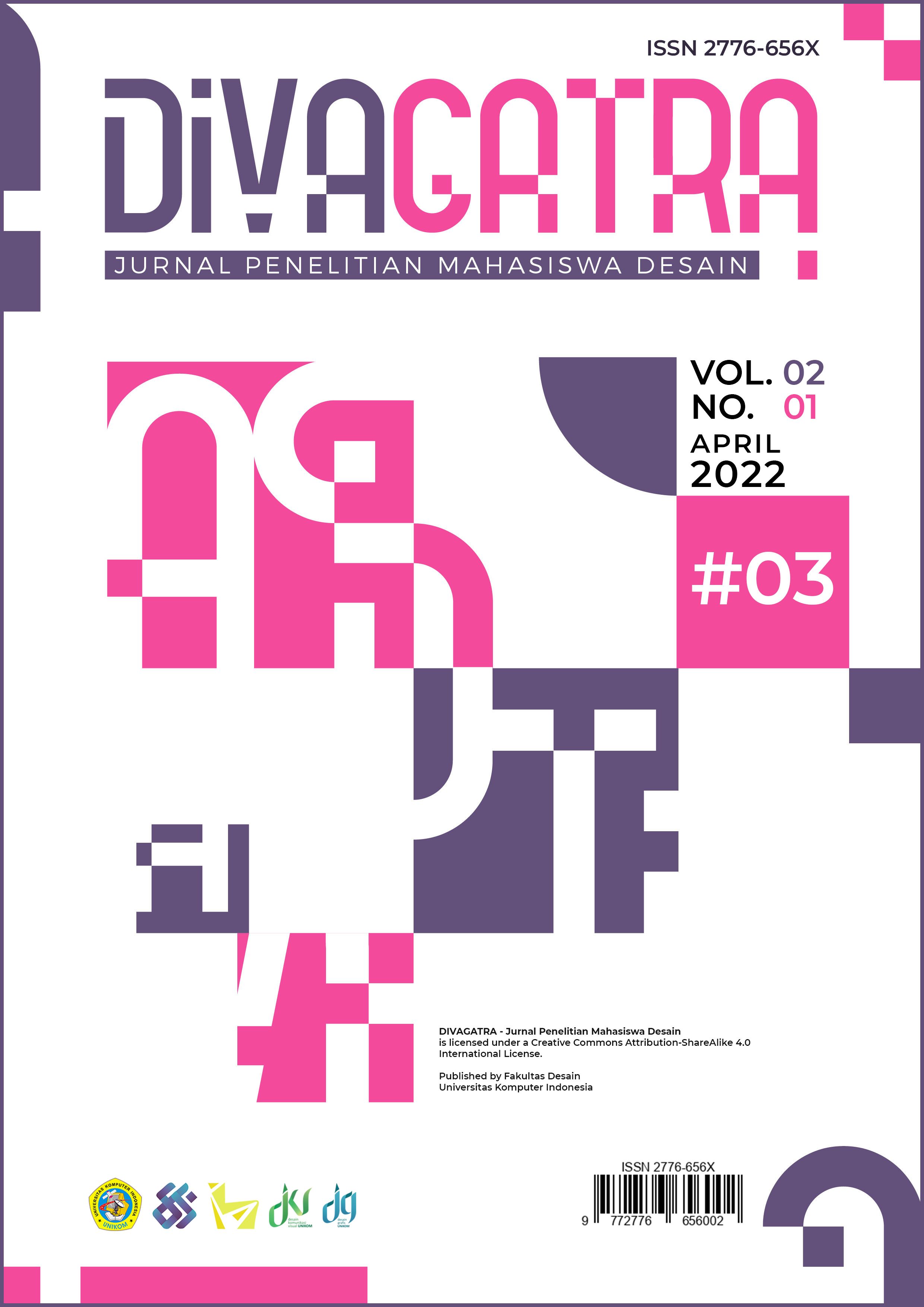Visual Poster Film Anime Akira Versi Tahun 2001 Dan Tahun 1989 Melalui Semiotika
Main Article Content
Abstract
Anime is a popular entertainment medium these days. Anime has several genres that describe the state of a particular society. One of them is the Anime film Akira which was released in 1988. This film has two variations of the poster which was released in 2001 and 1989. Both posters have different visuals. The difference lies in Kaneda's character which is shown differently from the angle of shooting, which in the 2001 poster Kaneda is shown from behind, while in the 1989 version it is shown from the front. Both Akira posters have elements related to the characteristics of Japanese society and culture, where there are several signs that are considered to have certain meanings. The selection of the method used in this study is the method of observation and descriptive explanation with semiotics from Roland Barthes, which is intended to find out the denotative and connotative meanings. Posters are studied by describing their visual elements, as well as being connected between meaning and related theories and presenting the results of the analysis of the explanation. the relationship between denotative and connotative meanings. This study was conducted to understand the representation of Japanese culture on Akira's posters.
Article Details
Section
![]()
Authors who publish articles in DIVAGATRA agree to the following terms:
- Authors retain the copyright of the article and grant the journal right of first publication with the work simultaneously licensed under CC-BY-SA or The Creative Commons Attribution–ShareAlike License.
- Authors can enter into separate, additional contractual arrangements for the non-exclusive distribution of the journal's published version of the work (e.g., post it to an institutional repository or publish it in a book), with an acknowledgment of its initial publication in this journal.
- Authors are permitted and encouraged to post their work online (e.g., in institutional repositories or on their website) before and during the submission process, as it can lead to productive exchanges, as well as earlier and greater citation of published work (See The Effect of Open Access).

